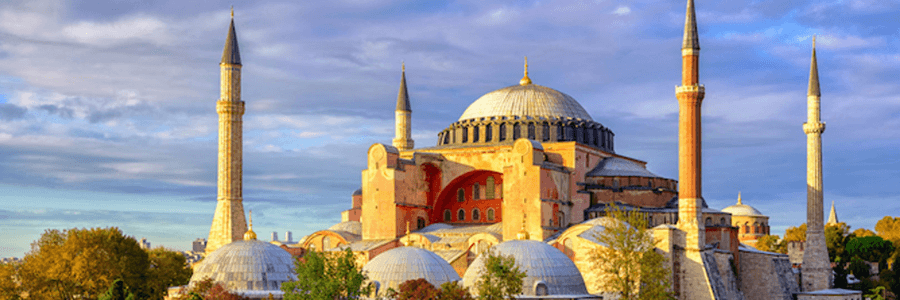
General Information About Hagia Sophia
Hagia Sophia, a historic landmark in Istanbul, is known for its architectural beauty and dual significance as a former cathedral and mosque, now a museum.
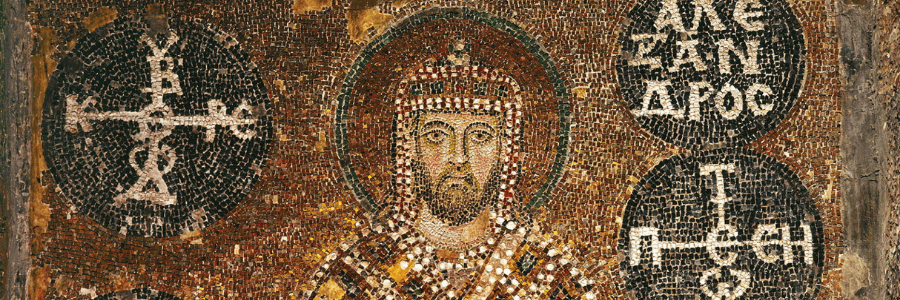
No.1: Emperor Alexander Mosaic
The Emperor Alexander Mosaic is a renowned ancient Roman artwork depicting Alexander the Great.
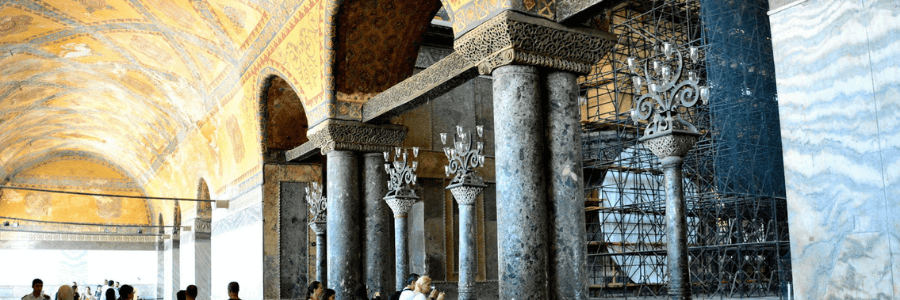
No.2: Empress´ Lodge
The Empress' Lodge in Hagia Sophia was historically a secluded area reserved for the Byzantine empress and her attendants during religious ceremonies.
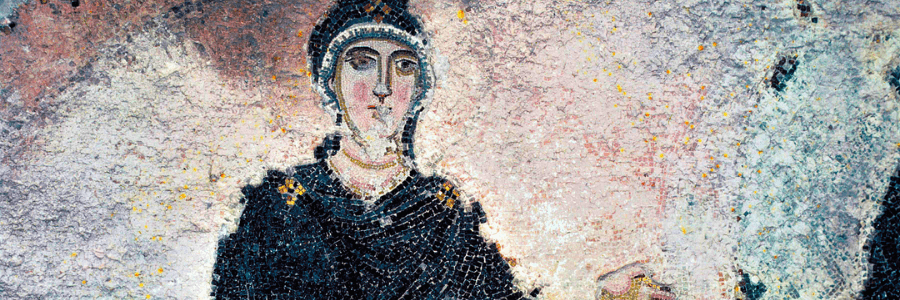
No.3: Priests´ Rooms (Secreta)
The Priests' Room in Hagia Sophia served as a space for clergy members to prepare for religious rituals and ceremonies.
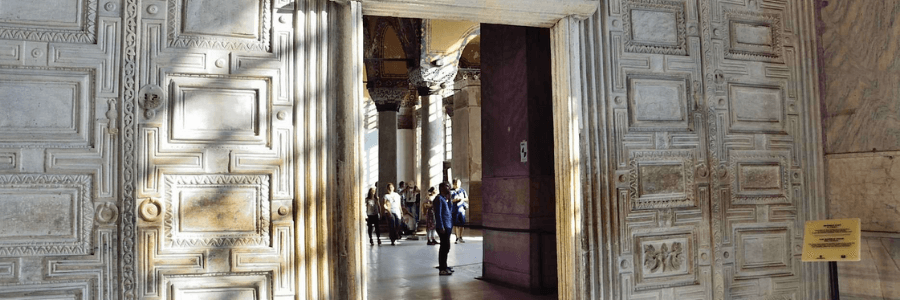
No.4: Marble Door
The Marble Door of Hagia Sophia is an ancient entrance adorned with intricate carvings, serving as a symbol of the architectural and historical significance of the monument.
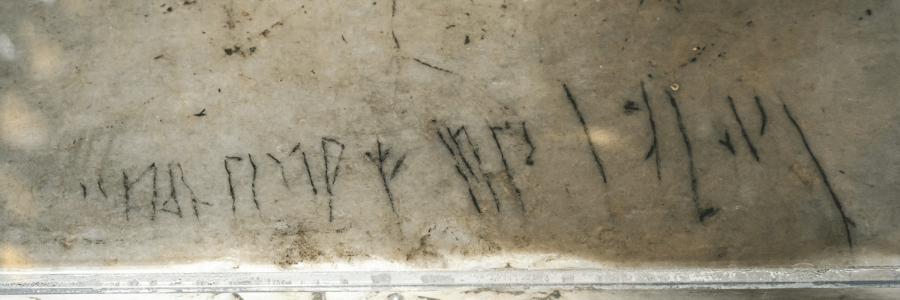
No.5: The Vikings
Viking inscriptions in Hagia Sophia signify their presence in the 9th century, bridging Norse culture with the Byzantine Empire.
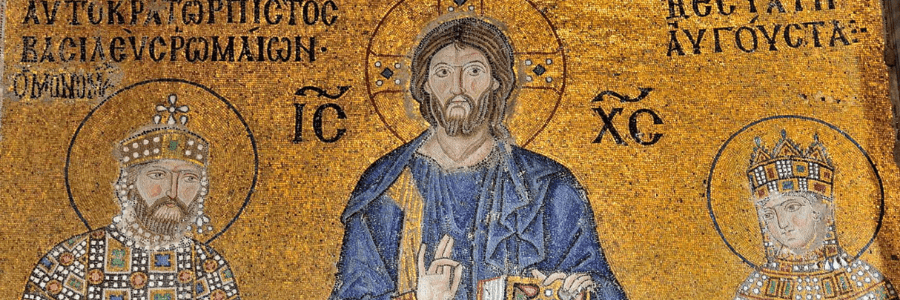
No.6: The Mosaic of Emperor Constantine the 9th and Zoe
The mosaic of Emperor Constantine IX and Zoe in Hagia Sophia is a striking depiction of Byzantine royalty, showcasing their power and influence during the 11th century.

No.7: The Komnenos Mosaic
The Komnenos Mosaic in Hagia Sophia portrays Emperor John II Komnenos and Empress Irene, reflecting the opulence and authority of the Byzantine Empire during the 12th century.
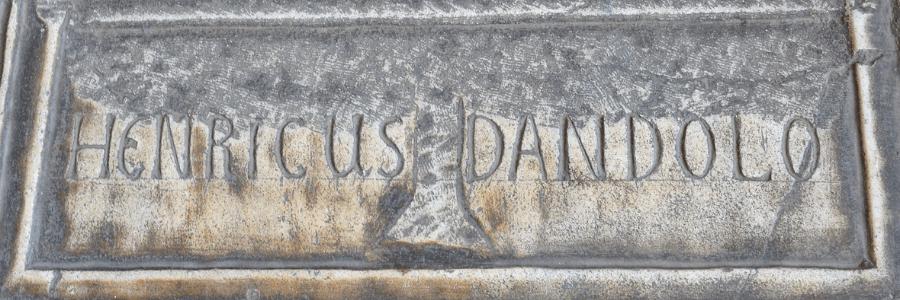
No.8: Tombstone of Henricus Dandolo, the "Doge" of Venice
Henricus Dondolo
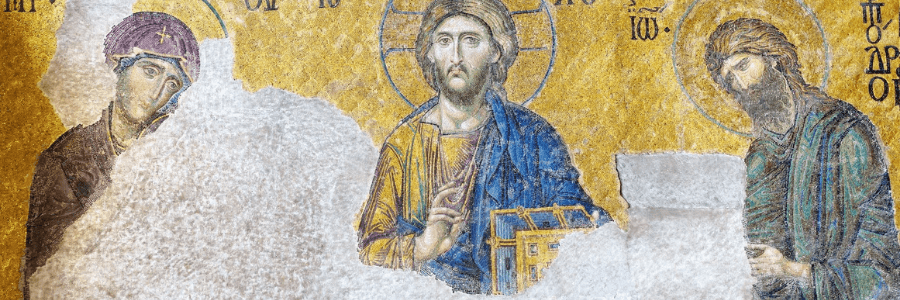
No.9: The Deisis Mosaic
The Deisis Mosaic in Hagia Sophia depicts Christ enthroned between the Virgin Mary and John the Baptist, symbolizing intercession and supplication in Byzantine religious art.
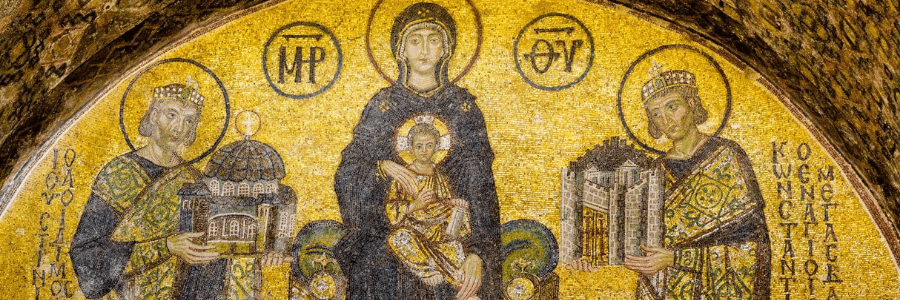
No.10: Presentation Mosaic (Southwest Vestibule Mosaic)
The Presentation Mosaic in Hagia Sophia depicts scenes from the life of Jesus Christ, showcasing Byzantine artistry and religious narratives.